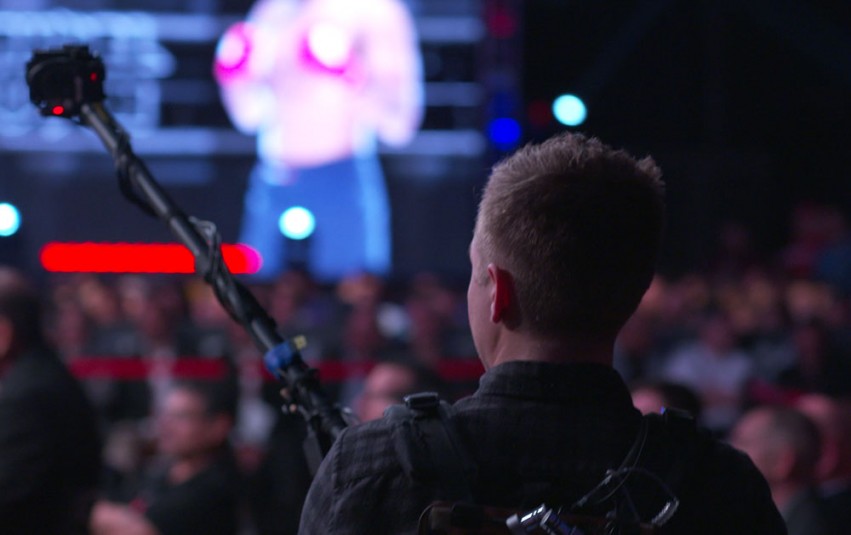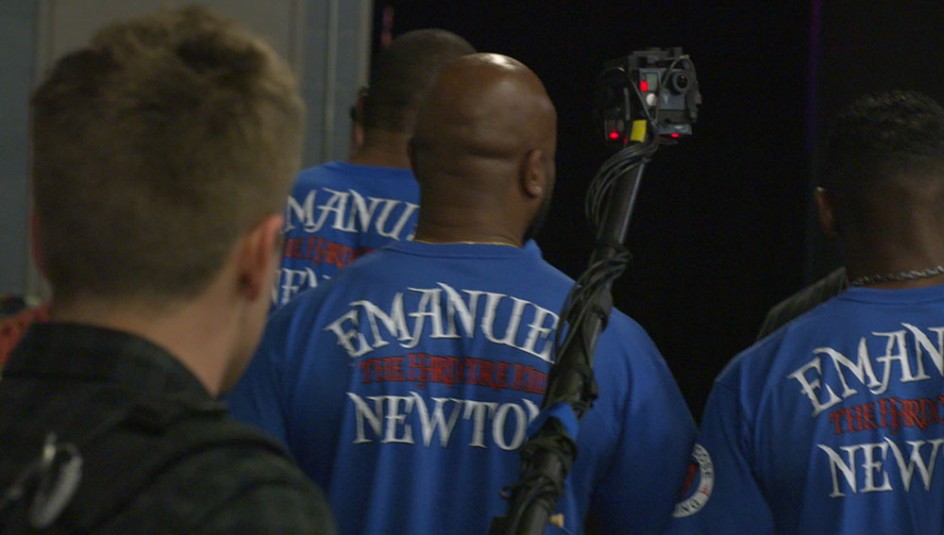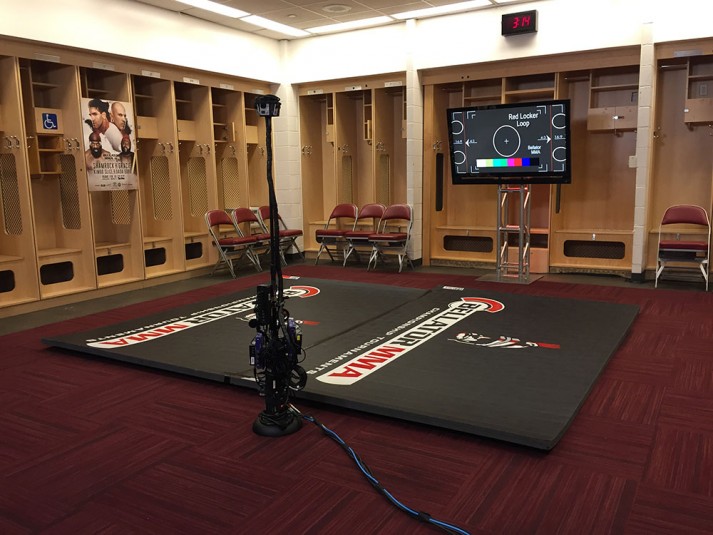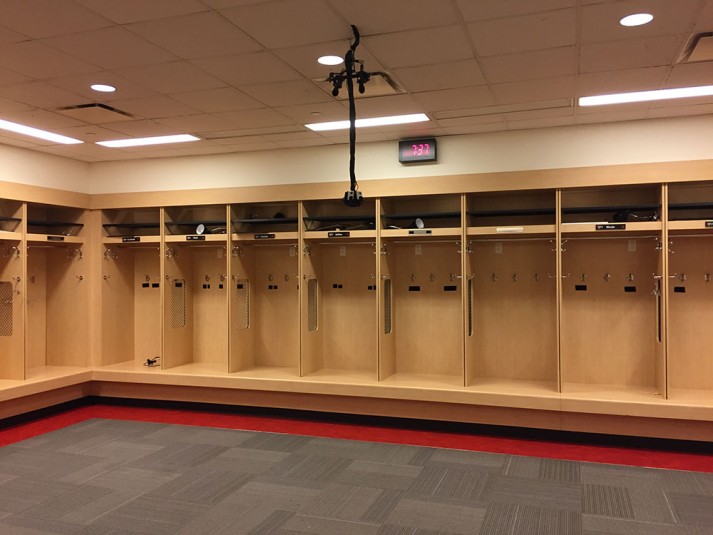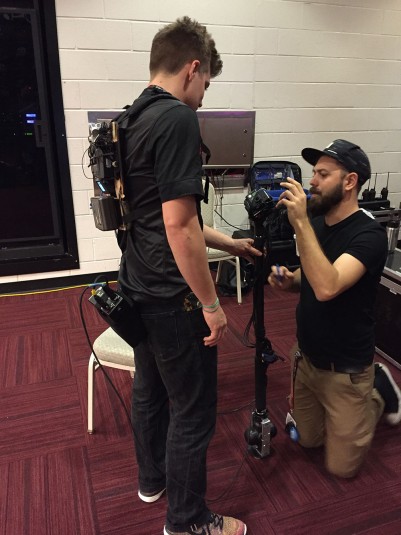Bellator Jumps on VR Bandwagon
On-demand production takes fans behind the scenes at Bellator 149: Shamrock vs. Gracie
Story Highlights
Although immersion is the buzzword in these early days of virtual-reality production, Bellator believes a second term is equally important: access. With that in mind, the Viacom-owned MMA promoter kicked off a virtual-reality effort at Bellator 149: Shamrock vs. Gracie last month by producing an on-demand VR/360-video experience taking fans inside Kimbo Slice’s locker room, walk-out, and post-fight celebration at the Toyota Center in Houston.
CLICK HERE for the all-access VR footage with MMA fighter Kimbo Slice.
“We are aware that a tiny fraction of our fan base will have the opportunity to attend an event in person,” says Bellator COO Jason Jordan. “So the challenge for us is, how can we effectively bring the cage to the couch and share the excitement of the night with fans who can’t attend the event?
“The five-camera broadcast coverage of our fights is absolutely great,” he continues. “Was sticking a VR rig on a pole next to the cage really going to move the needle for us? Probably not. So we decided not to use VR as part of the [live fight coverage] but rather as a new dimension for engagement and storytelling. We want to immerse fans in experiences that wouldn’t otherwise be available to them.”
This isn’t Viacom’s first virtual-reality outing. The media giant has made VR experimentation a priority in recent years, producing VR experiences for properties ranging from MTV’s VMAs red carpet and VH1’s Streamy Awards to a Comedy Central standup special and non-televised Bellator prelim fights.
“Everyone at Viacom shares a common sentiment that VR presents a new opportunity to immerse fans into the story and new experiences,” says Jordan. “I’m always looking for ways to leverage technology to bring fans into the cage and connect fans to the emotion and passion of the sport, which makes MMA [different from] stick-and-ball sports. That raw, unbridled passion and emotion can’t always be captured with a traditional television camera.”
The VR Production Workflow in Houston
Bellator rolled out a six-person in-house crew for the VR production at Toyota Center, deploying three 360-camera rigs outfitted with six GoPro HERO3 cameras each. Two GoPro systems were robotic stationary rigs inside the locker rooms; the third was a manned mobile rig attached to a pole that moved between locker rooms and followed the fighters during their walk-outs.
“There is a group here at Viacom on the digital side that shoots a lot of our short-form digital content for all of our properties, and they are well-versed in being quick, nimble, and cost-effective,” says Jordan. “A few people in that group are really passionate about VR and have spearheaded a lot of the testing we’ve done to date.”
The cameras recorded AVC/H.264 1,920×1,440 content (final export is 4,096×2,048) onto six 32-GB micro SD cards. The stationary rigs recorded at 29.97 fps, and the manned mobile rigs recorded at 59.94 fps to increase image clarity during movement.
“After looking all the footage, the mobile rig content was by far the most compelling,” saysJordan. “While the stationary-camera footage was great, the mobile rig adds a whole new dimension. I think we’ve got some incredible stuff, and we’re all really proud of it. In terms of VR content that is out there right now, I think this stands at the top or close to the top of the pyramid. The whole notion of mobility and moving with Kimbo Slice created an absolutely amazing experience.”
The Postproduction Workflow
Once the footage was captured, the Bellator production team assembled a VR/360-video piece that told the story of the evening.
“We really wanted to experiment and get our feet wet in order to establish some best practices, but we also felt like we needed to create a compelling storyline,” says Jordan. “At the end of the day, the technology is not what’s going to move the needle for fans; it’s the experience.”
After the raw footage was ingested, the team used Kolor AutoPano to stitch together media from the six independent cameras and exported the file into Adobe Premiere for finish editing and into Adobe After Effects for graphics (such as a pointer indicating Royce Gracie standing in the cage as Slice approaches). The post team used Adobe Audition to mix and add sound effects to the experience. Finally, the audio and video files were merged in Adobe Premiere for the final export.
The five-minute-43-second 360-degree video was released on March 9.
On the Horizon: Pushing the Envelope and Going Live
Jordan says future VR productions will take place at Bellator’s higher-profile events: Bellator 153 on April 22 at Mohegan Sun Arena in Uncasville, CT, and Bellator 154 on May 14 in San Jose, CA. Jordan expects a similar-size crew and camera complement at these events but plans to explore new ways to immerse the viewer in the Bellator experience.
“We are going to experiment with everything,” he says. “We are going to experiment with [voiceover] from our announcers, even giving viewers auditory cues about what is happening where and where to look.
“Going forward,” he continues, “we would love to enrich the whole experience by providing stats and data points as part of the VR so that it becomes more than just a new immersive way to go inside the locker room, [adding] information that [fans] wouldn’t get during the traditional broadcast.”
The big question for Bellator fans becomes: will this experience ever go live?
“Short term, our goal is to continue to capture interesting on-demand non-live moments for our fighters, but Phase 2 is ultimately to go live,” says Jordan. “With some of the technology that Google is purportedly going to come out with, that will become easier. I can see a world where you are sitting on your couch watching a Bellator fight and the announcers tell you to fire up the Bellator app or YouTube channel to watch live VR of the next fighters’ walk-out or warming up in the locker room before the fight.”
